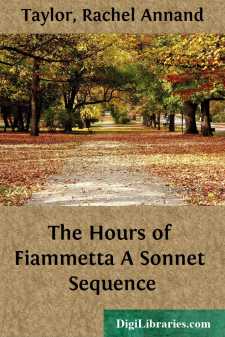Categories
- Antiques & Collectibles 13
- Architecture 36
- Art 48
- Bibles 22
- Biography & Autobiography 813
- Body, Mind & Spirit 142
- Business & Economics 28
- Children's Books 14
- Children's Fiction 11
- Computers 4
- Cooking 94
- Crafts & Hobbies 4
- Drama 346
- Education 46
- Family & Relationships 57
- Fiction 11829
- Games 19
- Gardening 17
- Health & Fitness 34
- History 1377
- House & Home 1
- Humor 147
- Juvenile Fiction 1873
- Juvenile Nonfiction 202
- Language Arts & Disciplines 88
- Law 16
- Literary Collections 686
- Literary Criticism 179
- Mathematics 13
- Medical 41
- Music 40
- Nature 179
- Non-Classifiable 1768
- Performing Arts 7
- Periodicals 1453
- Philosophy 64
- Photography 2
- Poetry 896
- Political Science 203
- Psychology 42
- Reference 154
- Religion 513
- Science 126
- Self-Help 84
- Social Science 81
- Sports & Recreation 34
- Study Aids 3
- Technology & Engineering 59
- Transportation 23
- Travel 463
- True Crime 29
The Hours of Fiammetta A Sonnet Sequence
Description:
Excerpt
PREFACE
There are two great traditions of womanhood. One presents the Madonna brooding over the mystery of motherhood; the other, more confusedly, tells of the acolyte, the priestess, the clairvoyante of the unknown gods. This latter exists complete in herself, a personality as definite and as significant as a symbol. She is behind all the processes of art, though she rarely becomes a conscious artist, except in delicate and impassioned modes of living. Indeed, matters are cruelly complicated for her if the entanglements of destiny drag her forward into the deliberate aesthetic effort. Strange, wistful, bitter and sweet, she troubles and quickens the soul of man, as earthly or as heavenly lover redeeming him from the spiritual sloth which is more to be dreaded than any kind of pain.
The second tradition of womanhood does not perish; but, in these present confusions of change, women of the more emotional and imaginative type are less potent than they have been and will be again. They appear equally inimical and heretical to the opposing camps of hausfrau and of suffragist. Their intellectual forces, liberated and intensified, prey upon the more instinctive part of their natures, vexing them with unanswerable questions. So Fiammetta mistakes herself to some degree, loses her keynote, becomes embittered and perplexed. The equilibrium of soul and body is disturbed; and she fortifies herself in an obstinate idealism that cannot come to terms with the assaults of life. No single sonnet expresses absolute truth from even her own point of view. The verses present the moods, misconceptions, extravagances, revulsions, reveries—all the obscure crises whereby she reaches a state of illumination and reconciliation regarding the enigma of love as it is, making her transition from the purely romantic and ascetic ideal fostered by the exquisitely selective conspiracies of the art of the great love-poets, through a great darkness of disillusion, to a new vision infinitely stronger and sweeter, because unafraid of the whole truth.
Fiammetta is frankly an enthusiast of the things of art; and her meditations unfortunately betray the fact that Etruscan mirrors are as dear to her as the daisies, and that she cannot find it more virtuous to contemplate a few cows in a pasture than a group of Leonardo's people in their rock-bound cloisters. For the long miracle of the human soul and its expression is for her not less sacredly part of the universal process than the wheeling of suns and planets: a Greek vase is to her as intimately concerned with Nature as the growing corn—with that Nature who formed the swan and the peacock for decorative delight, and who puts ivory and ebony cunningly together on the blackthorn every patterned Spring.
The Shaksperean form of sonnet yields most readily the piercing quality of sound that helps to describe a malady of the soul. But the system of completed quatrains in that model suits more assured and dominating passion than the present matter provides....


